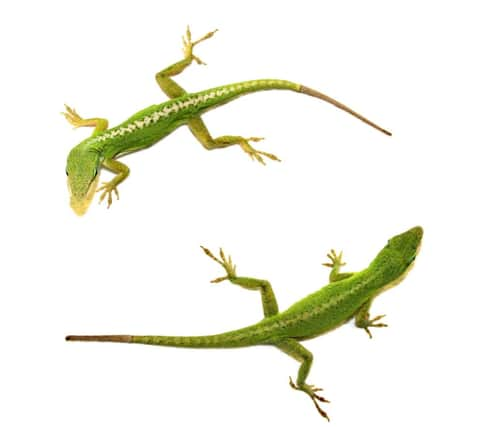How humans could grow new limbs like lizards


Understanding how they shed and regrow their tails could lead to muscle and nerve regeneration in humans.
New research by academics in the US has revealed the “recipe” the creatures use to form a new tail, which they say relies on a very specific combination of genetic ingredients.
Advertisement
Hide AdAdvertisement
Hide AdThe team from Arizona State University (ASU) used cutting-edge gene-sequencing technology to study the green anole lizard, Anolis carolinensis, which when caught by a predator, can shed its tail in order to escape.
The detached tail often writhes and wiggles, creating a deceptive sense of continued struggle that is aimed at distracting a predator’s attention from its fleeing prey.
After dumping its tail, in a process known as autotomy, the reptile has the ability to create a new one over a period of about three months.
The new section will contain cartilage rather than bone, and the skin may be distinctly discoloured. The researchers discovered lizards are able to switch on 326 genes from their genetic “toolbox” to create a new tail.
They hope their findings will help lead to discoveries of new treatments for missing limbs, spinal cord injuries, birth defects and diseases such as arthritis.
“Using next-generation technologies to sequence all the genes expressed during regeneration, we have unlocked the mystery of what genes are needed to regrow the tail,” said lead author Kenro Kusumi, professor in ASU’s school of life sciences.
“By following the genetic recipe for regeneration that is found in lizards, and then harnessing those same genes in human cells, it may be possible to regrow new cartilage, muscle or even spinal cord in the future.”
Other creatures such as salamanders, frog tadpoles and fish can also regenerate their tails but new growth is mostly centred around the tip.
Advertisement
Hide AdAdvertisement
Hide AdDuring regeneration, they all turn on genes in what is known as the “Wnt pathway” – an important process in embryonic development that is required to control stem cells in many organs, including the brain, hair follicles and blood vessels.
However, the lizards have a unique pattern of tissue growth that is distributed throughout the tail.
Prof Kusumi added: “Lizards basically share the same toolbox of genes as humans. Lizards are the most closely related animals to humans that can regenerate entire appendages.”
Jeanne Wilson-Rawls, a co-author of the study and associate professor at ASU’s school of life sciences, said: “Just like in mice and humans, lizards have satellite cells that can grow and develop into skeletal muscle and other tissues.”